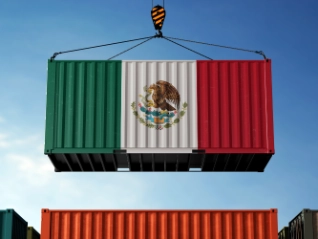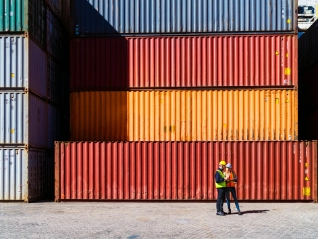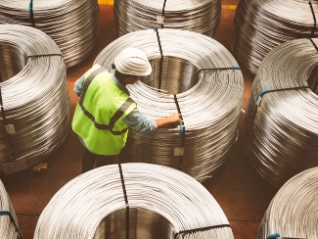Our Atradius Exclusive series will provide you with the latest insights from Atradius Economists, annual reviews of corporate payment practices, sector performance and more.

Reports and whitepapers from our industry experts

Latest news and insights

Latest blogs

Helpful guides at your fingertips

Your questions answered

Examples of high quality credit management processes and practices

Success stories from our diverse range of clients
Chemicals production growth projected to slow in 2025/2026 due to US tariffs


Trade tensions trigger higher insolvencies

US business response to shifting trade policies

Looking for safe havens in a divided region

Tariffs and related uncertainty causing a large negative impact

In some markets the indirect impact of tariffs could dampen higher food spending

Survey findings across the United Arab Emirates highlight mounting financial pressure on companies amid rising bad debts
Viewing 7 out of 203
The Shanghai Cooperation Organisation presented an alternative political economic vision for the world, but underlying...


The President promised the return of millions of factory jobs, but rising investment pledges masks a mixed picture for US manufacturing

100 years of managing risk, gaining knowledge and building trust

Closer ties could boost trade and create a functioning alternative to the misfiring WTO. But without the involvement...

While the deal brings a sigh of relief, unresolved details and ambitious targets leave...

Atradius Syndicate 1864 will focus on trade credit risks, initially targeting new and existing European...

Businesses face increasing supply chain risk as geopolitical tensions, tariffs and economic incentives...
Viewing 7 out of 48







Viewing 7 out of 26
Having a credit management system that operates seamlessly with the rest of your business is...


In an interconnected and volatile global economy, falling exports are more than a trade concern. They can...

Global disruptions can hit cash flow hard. Credit insurance helps businesses stay resilient, absorb shocks, and keep trade moving

Many businesses underestimate the true impact of buyer credit risk assessment. This oversight can quietly erode profitability

Resilience planning can be the difference between business growth and catastrophic...

When people think of trade credit insurance, they often associate it...

The bill of exchange has shaped global trade for centuries. While it works well to enable securing transactions, it also carries the...
Viewing 7 out of 25
- What is trade credit insurance?
- What is credit risk?
- Why credit management is important?
- What is business insurance?
- SME Insurance Singapore
- What is debt recovery?
- What is export credit insurance?
- What is political risk insurance?
- How much does credit insurance cost?
- How can I reduce DSO?
- How can I insure my export trade credit?
- How do you know if a business is failing?
- Why do traders take out credit insurance?
Every customer is a potential risk. The larger and more solvent they are, the greater the risk. In January 2023, Brazil...


Atradius supports Park Polymer's business by helping the company quickly determine the credit worthiness of customers which enables them to sign on...

With the backing of Atradius’s resources, EnCom Polymers has been able to expand business with existing customers and go...

BVV GmbH grew internationally and recognised risks such as companies on the brink of insolvency in plenty of time to mitigate the...

Atradius Surety has enabled Vinci Construction France to expand their sources of finance beyond their...

How we are part of Continental Banden Groep B.V.'s business process, minimising risk and supporting sales

Ben Green, President and Owner at Metalco Incorporated in Chicago, Illinois, explains how Atradius Trade Credit Insurance has helped him secure new...
Omron has achieved sustainable growth while navigating the uncertainties of China-US trade relations and regional manufacturing transformation.


FERM offers competitive payment terms and limits their credit risk to developing countries by using Atradius Dutch State Business (DSB) and the DDGF.

El Ganso credits our support in helping the fashion brand grow from a domestic-focused Spanish startup to a successful international business.

Janson Bridging uses export credit insurance from Atradius Dutch State Business (DSB) to offer favourable credit terms to customers located in emerging...

Late payers prompted content marketing agency KMOdynamoo to take out an Atradius credit insurance policy and has resulted in better debtor management.

Calidad Pascual partners with international credit insurance firm Crédito y Caución Atradius to gain additional knowledge of international markets.

By providing open dialogue, insight and valuable credit information we helped Brook Green Supply improve their internal credit...
Case study
Metalco Inc.: Driving new business with quick communication
Ben Green, President and Owner at Metalco Incorporated in Chicago, Illinois, explains how Atradius Trade Credit Insurance has helped him secure new business confidently.
Explore
































